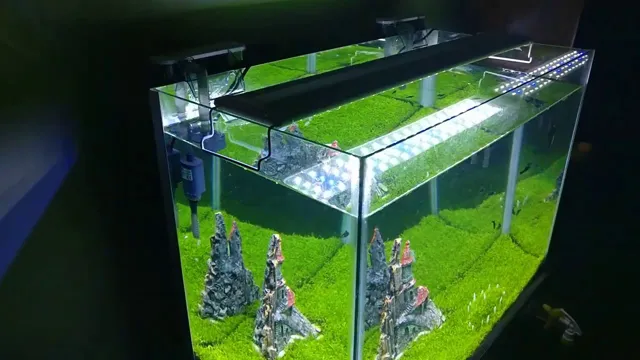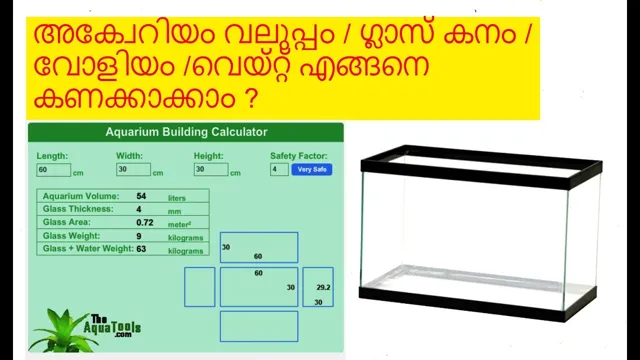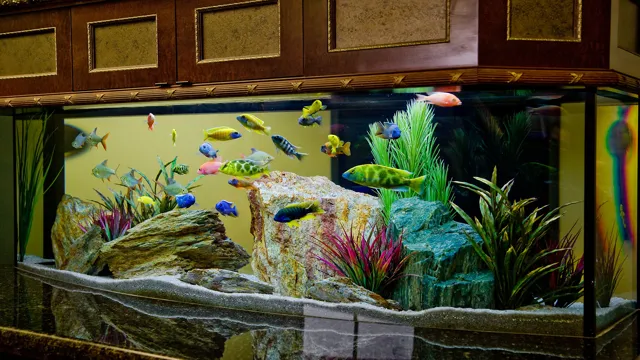How Often to Replace Filter on Small Aquarium: A Guide for Fish Keepers
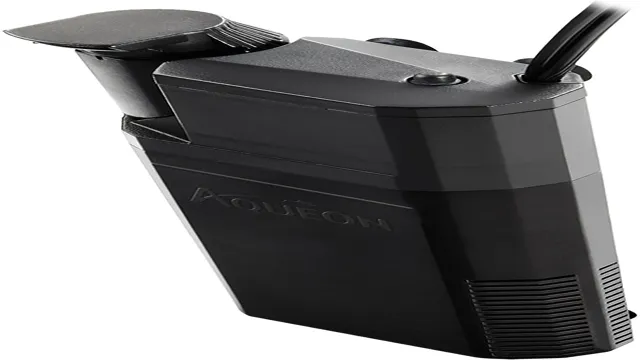
A small aquarium can be a wonderful addition to any home, bringing a slice of nature indoors and providing a tranquil sanctuary for your fish. However, keeping your aquarium clean and healthy requires regular maintenance, including replacing the filter on a regular basis. The filter in your aquarium is responsible for removing debris and waste from the water, keeping it clean and healthy for your fish to thrive.
But how often should you be replacing the filter on a small aquarium? In this blog, we will explore the factors that will determine how often you should replace your small aquarium filter, so that you can ensure your fish live happily and healthily in their underwater haven.
Importance of Regular Filter Replacement
If you have a small aquarium, it is important to regularly replace the filters in order to maintain a healthy environment for your fish. But how often should you be replacing them? It is generally recommended to replace the filter cartridge every four to six weeks. However, this can vary based on the size of your aquarium and the number of fish you have.
Keeping a close eye on the water quality and clarity can help you determine when it’s time for a filter change. A good rule of thumb is to change the filter whenever you notice a decline in water quality or if the water becomes cloudy. By staying on top of filter changes, you can ensure your fish are living in a clean and healthy environment.
Maintaining Water Quality
Water quality is important for maintaining good health, and regular filter replacement plays a crucial role in keeping water clean and safe. Filters are designed to trap contaminants and impurities, ensuring that the water you drink is free from harmful elements. However, over time, filters become clogged and less effective, allowing these contaminants and impurities to pass through.
This is why it’s essential to replace your filters regularly. Doing so will help to maintain the quality of your water, ensuring that it’s safe for you and your family to drink. Think of it like changing your car’s oil – if you don’t change it regularly, your vehicle’s performance will suffer.
The same is true for your water filter. By replacing it on a regular basis, you can keep your water quality high and ensure that your family stays healthy.
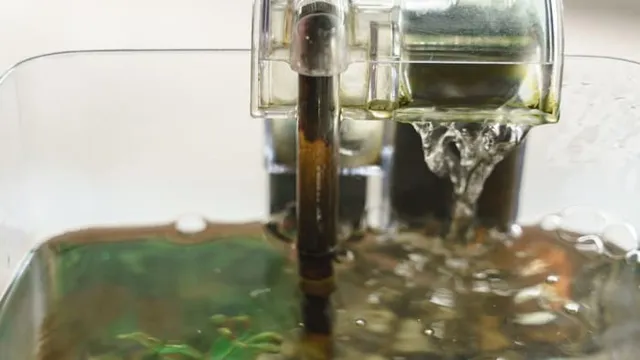
Preventing Fish Illnesses
As a fish owner, it’s crucial to take proper care of your aquatic friends to prevent them from falling ill. One important aspect of fish care is regularly replacing the filter. Filter replacement is crucial because it ensures that the water in the tank remains clean and healthy for the fish to thrive.
Over time, filters accumulate debris and bacteria that can harm the fish, making it essential to replace the filter every four to six weeks. Failure to do so can lead to a buildup of harmful substances in the water that can cause serious fish illnesses. Just like how humans need a healthy environment to live, fish also need a clean and healthy environment to thrive, and replacing the filter regularly is essential in ensuring that.
So, make sure to keep an eye on the quality of the water in your fish tank and replace the filter on schedule to keep your aquatic friends healthy and happy!
Factors Affecting Filter Replacement Frequency
If you have a small aquarium, it’s essential to know how often to replace the filter. Several factors can affect the frequency of filter replacement, the first of which is the size of the aquarium. If you have a small aquarium, you may need to replace the filter more frequently than a larger one.
Another factor is the type of filter you have. Some filters require more frequent replacement than others, depending on their design. Water quality is also an important factor to consider, as poor water quality can impact the lifespan of your filter.
Additionally, the number of fish you have in the aquarium can affect filter replacement frequency, as more fish produce more waste. Lastly, how well you maintain your aquarium can impact how often you need to replace the filter. Regular cleaning and water changes can prolong the life of your filter.
In general, it’s recommended to replace filter media every 2-4 weeks, but it’s essential to monitor the aquarium, observe your fish, and adjust the frequency accordingly.
Tank Size
When it comes to aquariums, one of the most significant factors to consider is the tank size. The larger the tank, the larger the filtration system required. This is because more water means more waste, which needs to be filtered out to keep the tank healthy.
Additionally, a larger tank means more surface area for beneficial bacteria to grow, which helps keep the water quality in check. It’s essential to choose a filter that can handle the size of your tank to ensure that the water remains clean and clear. Failure to do so can lead to a buildup of harmful chemicals and bacteria, putting the health of your fish and other aquatic life at risk.
Therefore, before purchasing a filter, it’s crucial to determine the gallons of water in your tank, and choose a suitable filter accordingly.
Fish Population
Fish population is a vital aspect of our ecosystem, and its sustainability is crucial for maintaining a balanced environment. One of the significant factors that affect fish population is the quality of water they live in and the amount of food available for them. The contaminants present in the water body can have a severe impact on the population of fish by affecting their growth and overall health.
To maintain healthy fish population, it is essential to replace the filters in the aquarium frequently. The frequency of filter replacement depends on several factors, including the size of the aquarium, the type of fish, and the amount of feed provided. A dirty filter can lead to a lack of oxygen, high levels of ammonia and nitrate, which can be extremely harmful to fish.
Therefore, it is recommended to replace the filters every two to four weeks to ensure that the quality of the water is maintained at an optimal level, providing the right conditions for fish to thrive. By taking care of the filtration system, we can help in maintaining a healthy population of fish, contributing to the overall balance of our environment.
Type of Filter
When it comes to replacing filters, the type of filter you use plays a big role in how often you need to swap it out. One factor to consider is the filter’s efficiency and how much it is used. For example, if you have a high-efficiency particulate air (HEPA) filter, it will trap more particles than a standard filter, which means it will generally need to be replaced more frequently.
Another factor is the environment the filter is in. If you live in an area with high levels of pollution or have pets that shed a lot of hair and dander, you’ll likely need to replace your filter more frequently. Other factors include the size of the filter, the quality of the air in your home, and the amount of use the filter gets.
By keeping these factors in mind, you can get a better idea of how often you need to replace your filter and ensure that your air stays clean and healthy.
Recommended Filter Replacement Frequency
If you have a small aquarium, it’s crucial to keep the filter in good working condition to ensure the health and well-being of your aquatic pets. But how often should you replace the filter? Well, the answer depends on the type of filter you have and the size of your aquarium. For most small aquariums, it’s recommended to replace the filter every 2-4 weeks.
However, if you have a heavily-stocked aquarium, you may need to replace the filter more frequently. It’s always a good idea to check the manufacturer’s instructions for specific recommendations on when to replace the filter. You can also keep an eye on the water quality in your aquarium.
If the water looks cloudy or smells bad, it may be time to replace the filter. Remember, keeping your aquarium’s filter in good working order is essential for the health and happiness of your aquatic pets, so don’t neglect this important task.
Manufacturer’s Guidelines
When it comes to maintaining indoor air quality, it’s crucial to follow the manufacturer’s guidelines for filter replacement frequency. Not only is it important for optimal performance, but it also affects the air you breathe. Most manufacturers recommend replacing filters every 1-3 months, depending on factors such as the type of filter and the amount of use.
Some high-quality filters may last up to 6 months, but it’s important to monitor their condition regularly. Neglecting to replace filters can lead to clogged filters, decreased efficiency, and even health problems. Think of your filters as the lungs of your HVAC system.
Just like our lungs need to breathe in fresh air to function properly, HVAC systems need clean filters to work correctly and maintain indoor air quality. So, don’t ignore the manufacturer’s recommendations for filter replacement. It’s a small investment that can have a massive impact on the air you breathe and the health of your HVAC system.
Observing Water Quality
Observing the water quality in your home is essential to ensure that your family is not drinking or using contaminated water. One of the key ways to maintain the cleanliness and purity of your water is by replacing the filter periodically. The recommended filter replacement frequency can vary depending on the type of filter, the size of your household, and the quality of your water.
In general, however, it is a good idea to replace your water filter at least every six months. This is because filters can become clogged and worn over time, reducing their effectiveness in removing impurities from your water. Additionally, if you notice a change in the color, odor, or taste of your water, it is essential to replace the filter immediately to ensure your water is safe to use.
Regular filter replacement is a simple yet crucial step in maintaining the quality of your water, helping you to stay healthy and hydrated.
Conclusion
In conclusion, keeping a small aquarium is a responsibility that requires attention and care. Just like changing the oil in your car, replacing the filter in your aquarium is a must-do task to keep things running smoothly. Don’t wait until you can smell the stench of a dirty filter or see debris floating in the water.
Pay attention to your fishy friends and check your filter regularly. After all, a clean filter equals a happy fish, and a happy fish equals a happy life. So, go ahead and swap out that filter – your aquatic pals will thank you for it!”
FAQs
How often should I replace the filter in my small aquarium?
It’s recommended to replace the filter every 2-4 weeks or when the water flow becomes noticeably reduced.
Can I clean my small aquarium filter instead of replacing it?
Yes, you can clean the filter by rinsing it with tap water and squeezing out the gunk. However, eventually, the filter media will lose its effectiveness and will need to be replaced.
What are signs that my small aquarium filter needs to be replaced?
You may notice reduced water flow, cloudy water, and an increase in algae growth. These are all indications that the filter is no longer functioning properly.
Can I use a larger filter on my small aquarium?
It’s not recommended to use a larger filter on a small aquarium as it can create too much water flow and stress the fish. It’s best to use a filter that is specifically designed for your aquarium size.
How do I choose the right filter for my small aquarium?
Choose a filter that is appropriate for your aquarium size and the type of fish you have. Look for filters with adjustable water flow, easy installation and maintenance, and good reviews from other aquarium owners.
Do different types of filters last longer than others?
Some types of filters may be more durable than others, such as sponge filters which can last up to a year with proper cleaning. However, all filters will eventually need to be replaced or have their media changed.
Can I run my small aquarium without a filter?
It’s not recommended to run an aquarium without a filter as the filter is responsible for removing waste and toxins from the water. A lack of filtration can lead to poor water quality and health problems for your fish.

